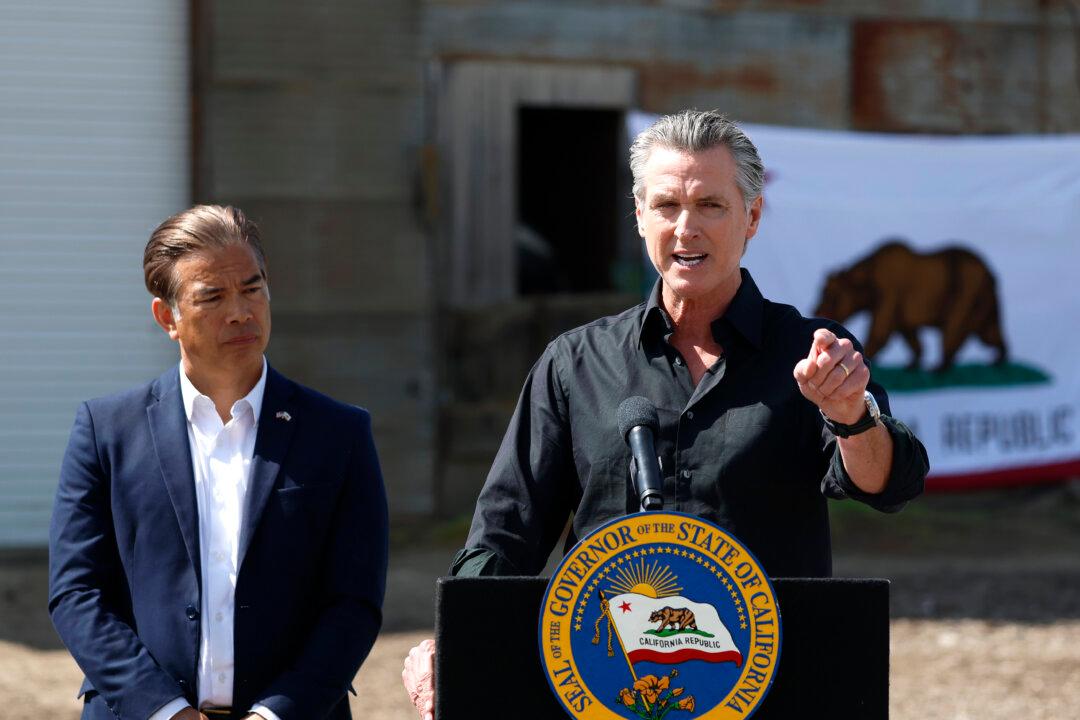Employees working for lawmakers in the California Legislature will have the right to negotiate terms and conditions of employment through a collective bargaining process established with a new law signed by Gov. Gavin Newsom Oct. 7.
Assembly Bill 1—introduced by Assemblywoman Tina McKinnor (D-Inglewood) and eight other members, in addition to a long list of bipartisan co-authors representing both chambers—allows staffers to form a union for the purpose of negotiating wages, benefits, and working conditions, with such impacting nearly 2,000 legislative and district staff members, effective July 1, 2026.
“Today is a huge victory. To the staff in our district offices and Capitol offices—including our dedicated committee staff—that honorably serve the people of the State of California every day, know this, we see you and we respect you,” Ms. McKinnor said in a press release Oct. 7. “We are taking action to make sure that current and future legislative staff, regardless of their member’s political affiliation, are afforded a safe, equitable and fair opportunity to build a noble career in public service.”
Bargaining rights will now be provided through the establishment of the Legislature Employer-Employee Relations Act, a change from prior law that did not grant such broad rights to public employees.
“Our staff aren’t looking for special treatment. They are looking for the same dignity and respect afforded to all workers. It is hypocritical as legislators that we ask our employees to staff committees and write legislation that often expands collective bargaining rights for other workers in California, but we intentionally prohibit our own workers from that same right.”
Not all staffers can join the union, and those unable to participate include chiefs-of-staff, office leaders and directors, and those responsible for managerial processes including hiring and firing.
While no groups were listed in opposition in the bill’s legislative analyses, consultants raised several areas of concern with the bill, including its “constitutionality and functionality.”
Analysts argued that the absence of clarification regarding strikes, mediation, or arbitration presents the opportunity for possible litigation.
Though ultimately supporting the measure, the Senate Judiciary Committee’s analysis noted that a decision to strike by staffers could jeopardize the government’s ability to operate and could be met with judicial scrutiny.
“The right to strike—universally understood to be employees’ most powerful tool in negotiating with intransigent employers—can hinder if not completely shut down this core function,” the consultants wrote. “Courts are unlikely to treat a strike in the public sector the same way as in the private, particularly one involving the Legislature, due to the responsibility of public employers to provide services to ensure the public welfare.”
Adding to the uncertainty of the matter is the decision made earlier this year by Congress to pass a rules package nullifying regulations that would have authorized unionization for staffers at the federal level for the duration of the current session, according to analysts.
The governor’s office offered no details on the decision behind the signing, or the implication of the concerns listed in the Legislative analyses.
“The governor’s signature speaks for itself,” a spokesperson for Mr. Newsom’s office told The Epoch Times by email Oct. 9.
More than 40 groups were listed in support, including the California Labor Federation—representing more than 1,200 unions and 2.1 million members and which helped craft the bill—the California Democratic Party, and the California chapter of the American Federation of State, County, and Municipal Employees—a nationwide public advocacy group.
“In any workplace, an imbalance of power leaves workers with little to no recourse to make their voice heard,” the groups wrote in the analyses. “AB 1 will grant employees of the Legislature agency over the decision to form and join a union, without fear of retaliation, and have a collective voice over their working conditions and protections in the workplace.”







